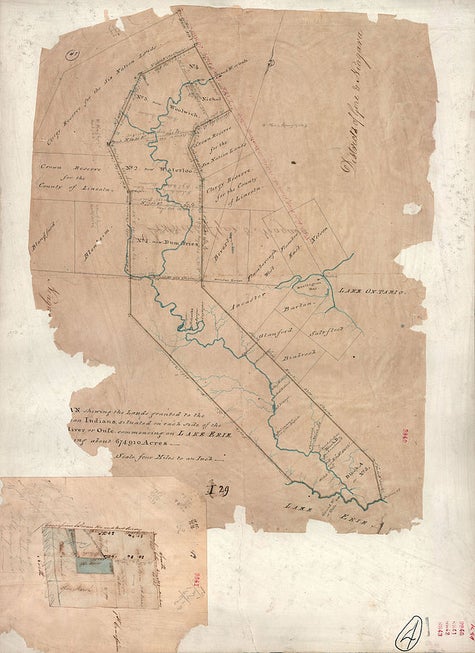Universities and reconciliation | Office of Indigenous Relations | About the Haldimand Tract
Public acknowledgement of the traditional territory upon which we all live is an important step toward reconciliation. The Truth and Reconciliation Commission of Canada’s final report calls for 94 actions toward restoring a balanced relationship between Indigenous peoples and settler communities in this country.
The University of Waterloo acknowledges that much of our work takes place on the traditional territory of the Neutral, Anishinaabeg, and Haudenosaunee peoples. Our main campus is situated on the Haldimand Tract, the land granted to the Six Nations that includes six miles on each side of the Grand River. Our active work toward reconciliation takes place across our campuses through research, learning, teaching, and community building, and is co-ordinated within the Office of Indigenous Relations.
Universities and reconciliation
Commitment to reconciliation actions is growing among post-secondary institutions and associations. The Canadian Association of University Teachers (CAUT) published a guide to territorial acknowledgment for Canadian universities, which includes the following: “[…] acknowledging territory is only the beginning of cultivating strong relationships with the First Peoples of Canada. CAUT encourages academic staff associations to reach out to local Aboriginal communities to open pathways for dialogue.”
Related links: Universities Canada, Federation for the Humanities and Social Sciences.
Office of Indigenous Relations
Jean Becker, Associate Vice-President, Indigenous Relations and Interim AVP, Human Rights, Equity & Inclusion, heads the Office of Indigenous Relations, a central hub for First Nations, Inuit, and Métis researchers, faculty and staff, along with allies within the University of Waterloo campus community. Additionally, the office provides guidance, support and resources to develop a shared vision towards the goal of reconciliation.
About the Haldimand Tract
On 25 October 1784, Sir Frederick Haldimand, the governor of Québec, signed a decree that granted a tract of land to the Haudenosaunee (Iroquois), also known as the Six Nations, for their alliance with British forces during the American Revolution (1775-83). The Haldimand Tract extends by 10 kilometers on both sides of the Grand River, from its source in Dundalk Township to its mouth at Lake Erie. Originally, 950,000 acres was designated for the Haldimand Tract, today approximately 48,000 acres remain. Read more about the history and ongoing negotiations: Six Nations Lands and Resources.

1821 map by Thomas Rideout showing "Indian Lands" along the Grand River, a portion of the Haldimand Tract.

Contemporary map showing original Haldimand Tract and Six Nations territory as of 2015.